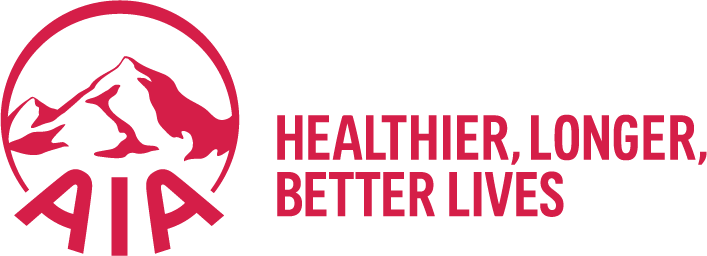Life Insurance
Lump sum payment if you were to pass away or are diagnosed with a terminal illness.

The most important things in your life are your family, your lifestyle and your future. This is what life, trauma and disability insurance are there to protect.
For Individuals
For Business
Lump sum payment if you were to pass away or are diagnosed with a terminal illness.
Choose from private health insurance or specialised cancer insurance.
Financial support if you or your child become seriously ill or injured.
Lump sum payment if you become permanently disabled and are unable to work.
Income protection insurance provides financial support if you can't work due to an accident or illness.
Simple plans you can buy online. Get protected with basic life, rent or mortgage protection.
Lump sum payment if you have an accident and suffer one of the covered injuries.
Gives you access to specialist consultations and diagnostic tests so that you can get on the path to treatment early.
Protection for business owners if a key person becomes seriously ill, is injured, or dies.
Providing cost effective and comprehensive corporate group insurance for your employees.
Financial support if a key person of your farm becomes seriously ill, injured or passes away.

AIA Vitality encourages and supports you to live a healthier life, while giving you access to great rewards along the way.
Learn more about the amazing benefits, discounts and rewards you'll have access to with AIA Vitality.
Learn how you can earn up to 15,000 points and $260 a year in Active Rewards.
Find out how you can earn 25 Airpoints Dollars or $25 Woolworths vouchers.
Get help with making a claim.
Make a Critical Illness, Critical Conditions, Progressive Care, Living Assurance or other trauma insurance claim.
Make an Accidental Injury insurance claim.
A personalised end to end claims experience when support matters the most.
AIA Group is one of the largest life insurers in the world, with a presence in 18 markets across Asia Pacific. AIA New Zealand Limited is part of the AIA Group and has been providing insurance to New Zealanders since 1981.

Get to know us
Work with us
News & Information
We're here to help! Check out our quick links and digital tools. Still have a question? Get in touch via Live Chat.
Contact AIAQuick Links
Understanding your policy
Other useful information
Updating policies, moving house, changing names, Covid-19 support... our FAQs section has all the answers and forms.
Product updates, enhancements and policy wordings for current and closed AIA or Sovereign policies.
Find out more about CPI indexation and how it may affect your insurance cover.
Helpful advice if you have recently arrived, or are considering moving to New Zealand.
A list of some of the services available in New Zealand that offer support, information and help.
The latest AIA investment performance information, as well as a list of closed and terminated investment products.
If you have a complaint, we’ll do our best to resolve the situation.
{{title}}
{{label}}
At AIA we are committed to helping people live Healthier, Longer, Better Lives. We believe a fundamental part of this is championing the fair and equitable treatment of everyone – our customers, our partners, and our people.
Since March 2022 AIA NZ has opted to publish our gender pay gap publicly. We did this to encourage the gender pay conversation, as well as to ensure that as an organisation we hold ourselves accountable for addressing our current pay gap and commit to making improvements.
A pay gap is the difference between the median rates of pay for different groups of people in an organisation.
At AIA New Zealand we use two key measurements to help us better understand and explain the underlying reasons for differences in pay – the Gender Pay Gap and the Pay Equity Gap.
Gender Pay Gap
A gender pay gap shows the difference between pay for men and women. At AIA NZ, we calculate our gender pay gap using the following formula:
This calculation provides a percentage figure. A pay gap of 10% for example would mean the average man was earning 10% more than the average woman, regardless of type of work they do or hours they work.
While this figure doesn’t compare like-for-like pay equity, it does give insight into the kinds of jobs men and women are generally undertaking, and the average rates of pay for these.
Pay Equity Gap
Pay Equity is about women and men receiving the same pay for doing jobs that are different, but of equal value. Within AIA NZ, this metric is based on the compa-ratio of men compared with women (comparing an employee’s earnings against the pay range for their role).
Gender Pay Gap
The gap between the median earnings of women compared with men.
In 2025, AIA NZ’s gender pay gap is 18.9% in favour of men.
Pay Equity Gap
The gap between the median earnings of women compared with men in similar roles.
In 2025, AIA NZ’s pay equity gap is 1.0% in favour of men.
Like many organisations within our industry, the key driver for the overall gender pay gap at AIA NZ is the distribution of our employee population. Specifically, we have a larger proportion of women in our lower paying roles, and a smaller proportion in our highest paying roles.
While the gender pay gap is higher than we would like, this is below the average gender pay gap for the Financial Services and Insurance industry of 29.3%.
In addition, the pay equity gap provides us with confidence that at AIA men and women receive equal money for doing equal work.
We acknowledge action needs to be taken to reduce our current gap, and we are focused on making changes to bring about greater equality.
Key areas of focus include:
We will be in contact as soon as we can.
Did you know, with an eligible policy you can view, claim and update your insurance with MyAIA? Find out more